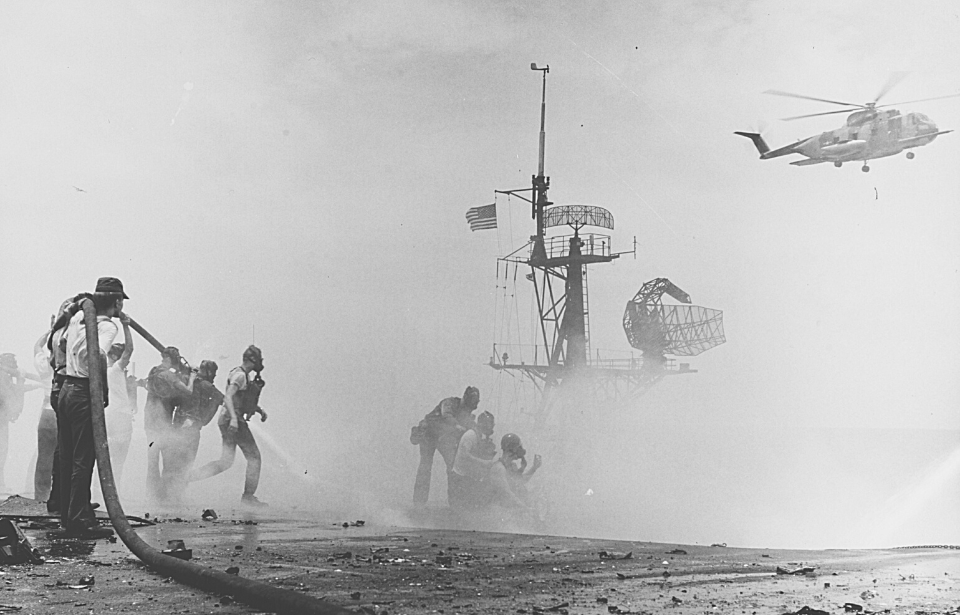The USS Forrestal‘s early service in the Atlantic and Mediterranean
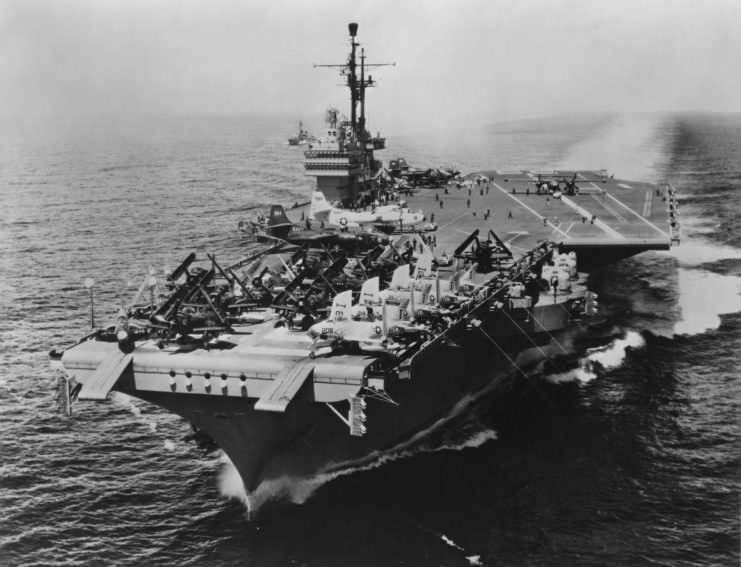
The lead ship of her class, the USS Forrestal was commissioned on October 1, 1955, marking a significant milestone as the first carrier designed to operate jet aircraft, earning her the distinction of being the Navy’s inaugural “supercarrier.”
During the Suez Crisis, Forrestal was deployed in the Atlantic Ocean and subsequently served in the Mediterranean with the US Sixth Fleet. In a precursor to her role in the Vietnam War, she was dispatched to Beirut during the 1958 Lebanon crisis, spending three days patrolling the coast.
In a historic feat in November 1963, Forrestal set a record when a Lockheed C-130 Hercules made 21 full-stop landings and takeoffs from her deck, establishing the largest and heaviest aircraft to land on a carrier. The following year, at the behest of US President Lyndon B. Johnson, the vessel was sent to Brazil to support the successful military coup d’état against President João Goulart.
The explosion on that fateful day
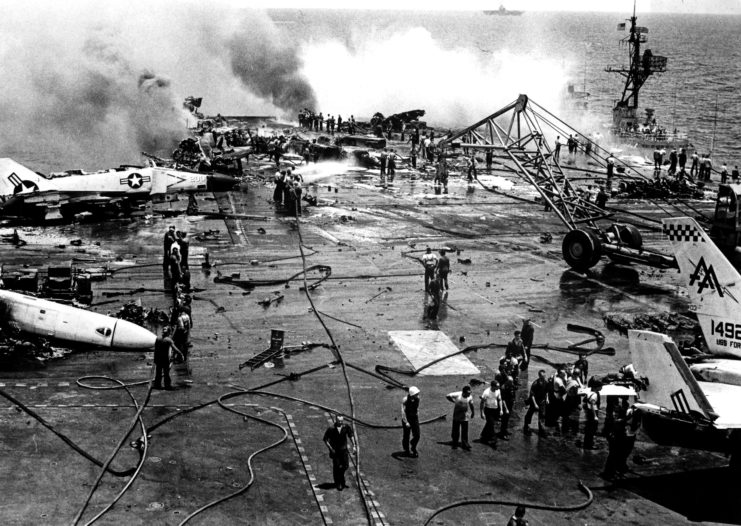
In June 1967, the USS Forrestal embarked on a deployment to the Gulf of Tonkin in the South China Sea, just off the north coast of Vietnam. During this deployment, aircraft from Attack Carrier Air Wing 17 (CVW-17) executed a series of successful missions from the vessel, marking the most intense air raid operation in the Navy’s history at that time.
On July 29, 1967, a critical incident occurred when an electrical surge in one of the McDonnell Douglas F-4B Phantom IIs aboard Forrestal triggered the accidental launch of a Mk 32 “Zuni” Five-Inch Folding-Fin Aircraft Rocket (FFAR). It traversed the deck and collided with a parked, combat-loaded Douglas A-4E Skyhawk, dislodging its 400-gallon external fuel tank. Inside the attack aircraft was the late Sen. John McCain, who managed to escape from the cockpit.
The impact led to fuel leaking from the A-4E, igniting a fire. As the flames rapidly spread, the initial firefighting teams faced tragic consequences, with the first two teams losing their lives while attempting to contain the initial explosion. Subsequently, nine more explosions occurred within the first five minutes after the initial rocket launch. Eventually, the escalating fire triggered the detonation of a 1,000-pound AN-M65 bomb.
The losses onboard the USS Forrestal were devastating
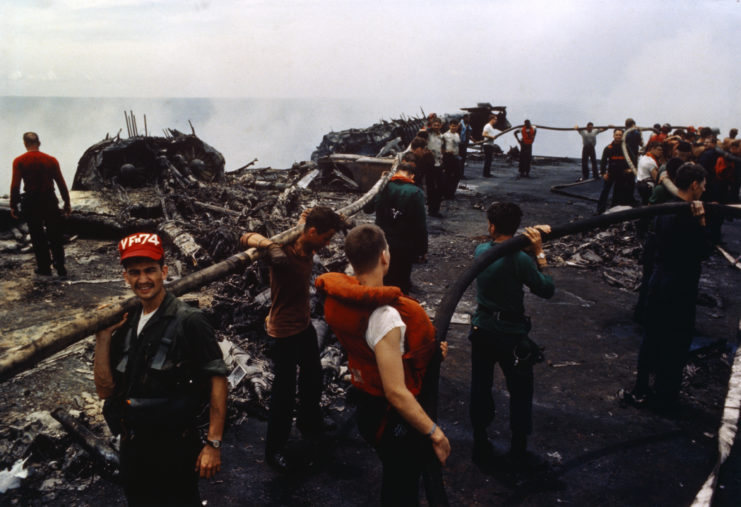
The fire spread relentlessly, trapping pilots within their aircraft. It took a full day to contain the blaze, exacerbated by the detonation of the first bomb that had blown a hole in the USS Forrestal‘s flight deck, allowing fuel to seep to lower levels. Subsequent explosions further ruptured the deck, leading to the tragic deaths of 50 crewmen when one occurred over their sleeping quarters.
With the assistance of destroyers USS Rupertus (DD-851) and George K. MacKenzie (DD-836), the fire was extinguished. The extent of casualties became painfully evident, and many were transported to the hospital ship USS Repose (AH-16).
The disaster claimed the lives of 134 sailors, with hundreds more sustaining injuries. Additionally, over 20 aircraft, including F-4Bs, A-4Es and North American RA-5C Vigilantes, were destroyed. Forrestal herself suffered damages exceeding $70 million.
Fighting fires at sea poses a dire dilemma for sailors, compelling them to confront the flames, endure the inferno or make the perilous choice to jump. While some survived the disaster aboard Forrestal, others faced a far grimmer fate. The explosions marked the most significant loss of life aboard a US Navy ship since the Second World War.
The US Navy changed its training
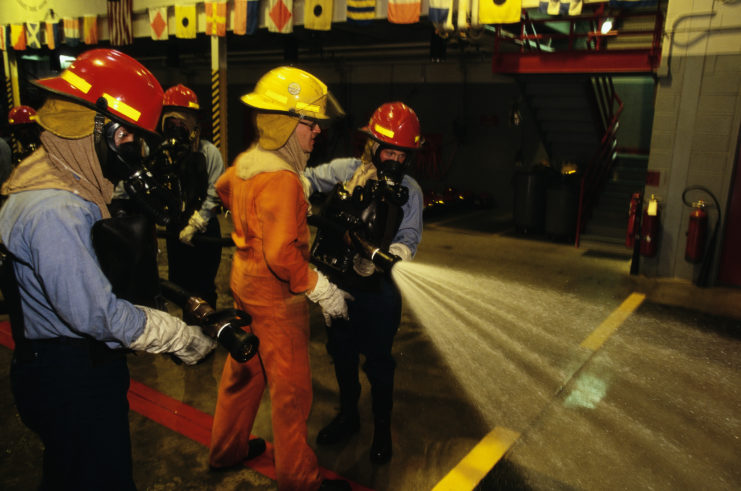
In the aftermath of the incident, the Navy initiated a comprehensive evaluation of its firefighting training procedures, revealing a previously relaxed culture, inadequate firefighting skills among sailors and delayed responses to unforeseen accidents.
Rear Adm. Forsyth Massey, leading the Aircraft Carrier Safety Review Panel tasked with investigating the disaster, determined that, “Poor and outdated doctrinal and technical documentation of ordnance and aircraft equipment and procedures, evident at all levels of command, was a contributing cause of the accidental rocket firing.”
The events that transpired onboard the USS Forrestal that day prompted a substantial overhaul of the Navy’s training program. New regulations and enhancements were introduced with the primary goal of preventing any recurrence of such a tragic incident. Despite the catastrophe, the service took valuable lessons to heart and established a robust firefighting training program that continues to be practiced to this day, aimed at safeguarding against similar occurrences in the future.
The USS Forrestal remained in service for several years after
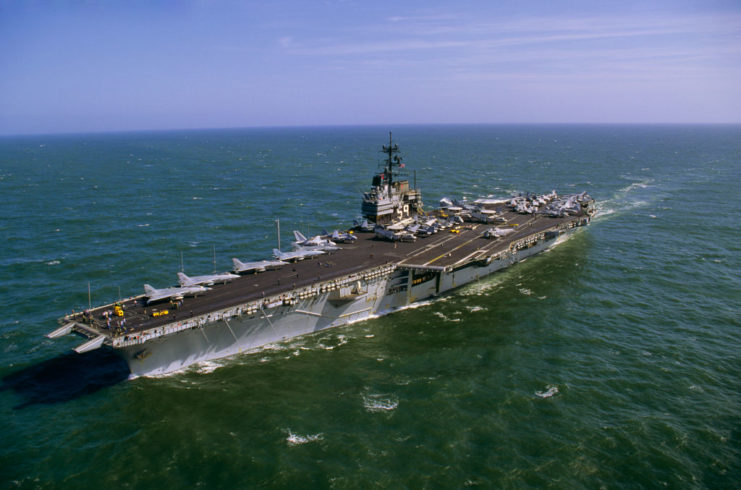
Surprisingly, the explosions that occurred on July 29, 1967 didn’t cause enough damage that the USS Forrestal couldn’t be repaired. Once given the OK to return to duty, the aircraft carrier was deployed to the Mediterranean a number of times, before serving in the 1981 Gulf of Sidra incident, participating in Operation Earnest Will in the Middle East, and being placed on standby during the Gulf War.
More from us: USS Nevada (BB-36): The Battleship That Survived Pearl Harbor and An Atomic Bomb
After providing air support during Operation Provide Comfort in 1991, Forrestal became a training carrier and was re-designated AVT-59. In 1993, she was decommissioned. Some 23 years later, in 2015, she was finally scrapped after failed attempts to turn her into a museum. Presently, a model of the vessel is on display in the “America’s War in Vietnam” section at the National Museum of the US Navy.
